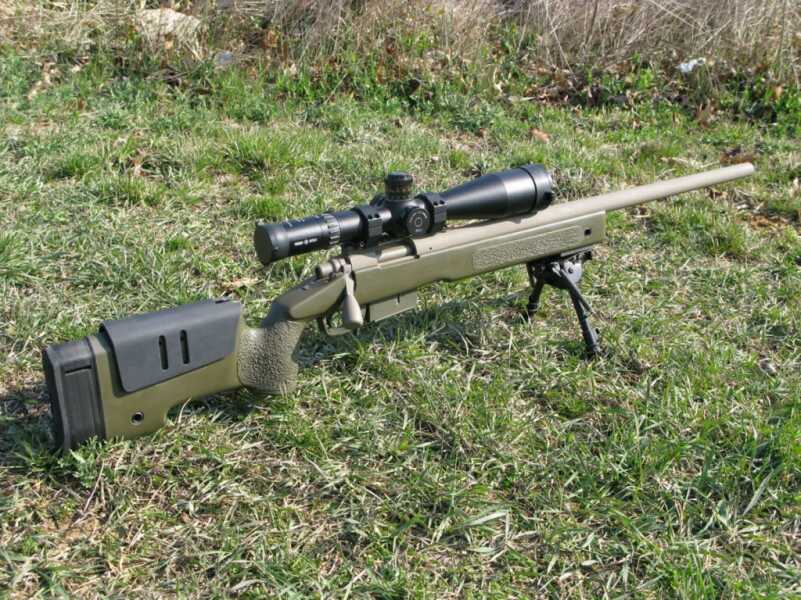
Ten years ago this rifle would’ve been the pinnacle of a precision competition build. It’s still a very nice rifle, but modern options give you a lot more flexibility for your money.
Get A Grip: Stocks In The Modern Era of PRS
Evolution is a constant state—especially in precision rifle competition where manufacturers look to improve and upgrade products to give an advantage wherever possible. While the rifle stock may seem like a pretty simple thing, it has evolved with the sport as much as optics and ammunition have.
The rifle stock is a vital part of the overall precision rifle system because it is the one part you interact with the most on the rifle. I like to say that a good precision rifle stock should fit you like an old pair of dusty boots so that when you get behind the gun you’re comfortable and relaxed. But picking the right stock for your precision rig can be a challenge because of the sheer number of options and accessories available.
What Is A Good Rifle Stock?
Before I get too deep into the weeds, I think I need to come right out and say that most of the stocks that come on factory varmint or long range rifles are pretty terrible. All too often they’re made from cheap plastic that’s too flexible for serious use and generally have poor ergonomics that don’t fit the shooter at all. This is why stocks are one of the first things to get replaced when a person gets a new long range rifle.
A stock that’s going to be good for long range competition use has to be made from a durable, rigid material that free floats the barrel and is adjustable to fit the shooter perfectly. A lot of different stocks are going to fit this bill and they generally fall into two categories: traditional composite stocks or chassis systems.

A chassis system like this Accuracy International AX AICS provides on-the-fly adjustability, a folding stock, a built-in detachable magazine system, and modularity that is hard for a composite stock to match.
Chassis Systems
Believe it or not, chassis systems were once looked down on by the long-range community. But that tide has turned as chassis systems have become more accepted for precision rifle builds. It should be noted that nearly every major rifle manufacturer makes a chassis rifle now and the US military’s M2010, M40A6, and Mk 13 sniper rifles use chassis systems. It’s not all that surprising that chassis systems have gained the popularity that they have given the enormous bang for the buck that they can provide.
One might be inclined to start off by extolling the virtues of the chassis bedding interface and how it doesn’t require the shooter to bed the action. To an extent this is true, but I’d like to start by talking about the adjustability of the chassis’ stock because this is where they begin to come into their own. Some stocks will start out as a non-adjustable base model but almost every chassis system that I’ve come across has had an adjustable length of pull (LOP) and adjustable cheek piece right off the bat. This is important on a competition rifle so that the gun can perfectly fit the shooter. Some chassis go beyond simple LOP and cheek adjustments though and allow the butt pad height and angle to be set, as well as allowing lateral adjustment to the cheek rest for the ultimate in shooter comfort. It’s not uncommon to also see some chassis systems like those from XLR Industries or MDT be compatible with AR-15 stocks and pistol grips for end-user customization.
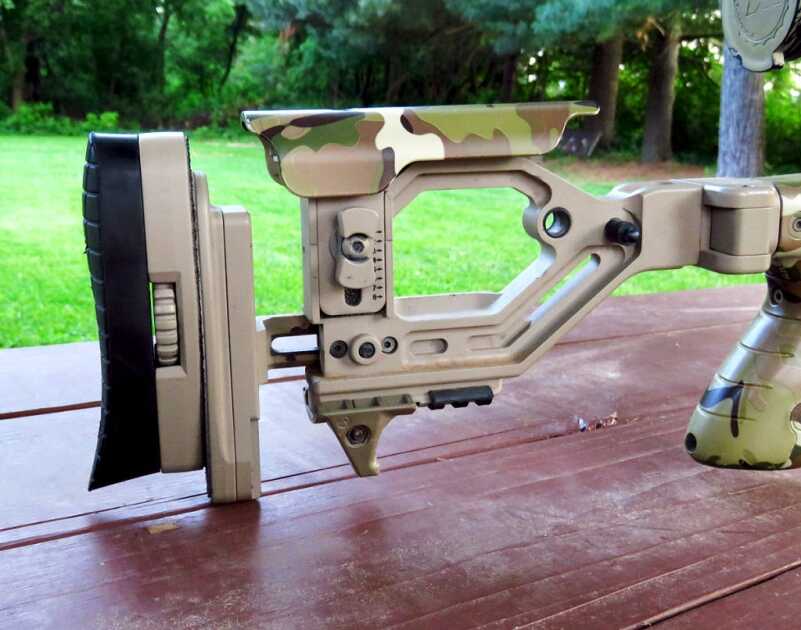
Many chassis systems on the market offer a fully adjustable buttstock that provides cheek height adjustment and length of pull adjustment, in addition to sling attachment points. Some models, like this Accuracy International chassis, offer additional adjustments of the butt plate to set it up perfectly for your shoulder.
Since the action area on a chassis systems is made from aluminum it’s easy for them to set up for a detachable box magazine (DBM) system from the get-go, which is a necessary feature on a modern competition rifle. I remember a time when a having a DBM wasn’t really that big of an advantage but now many courses of fire are designed around having at least 10 rounds in the rifle at the start. Given that the magazine well is machined into the chassis, it’s another part you that don’t have to buy and have installed. This keeps costs down for the shooter who may be on a budget and also increases the overall reliability of the DBM system.
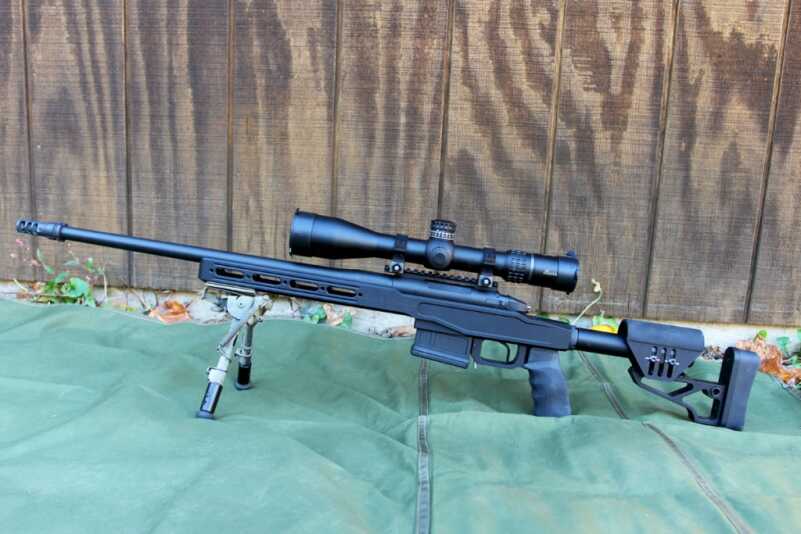
The great thing about some aluminum chassis systems like those from XLR Industries or Modular Driven Technologies is that they are compatible with AR-15 stocks and grips. Using the same tools you wrench on your AR with you can install a new pistol grip or stock to suit your fancy.
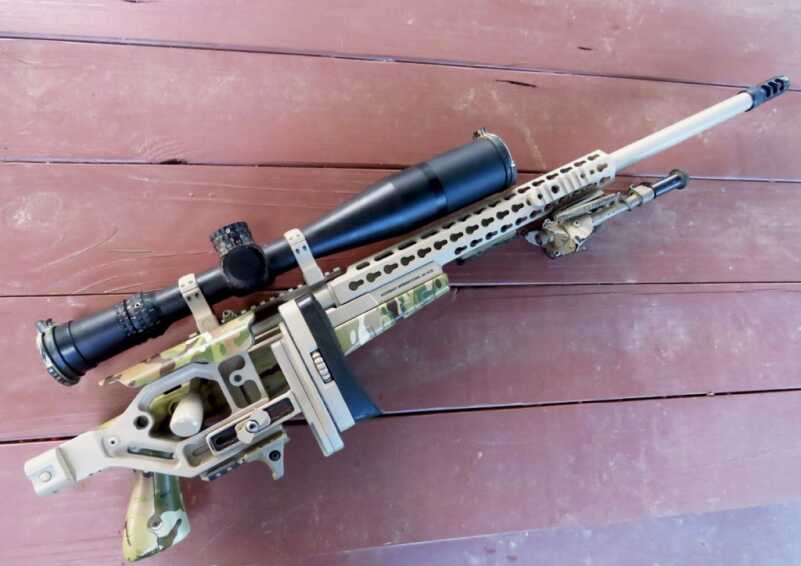
Folding stocks on a precision competition rifle are a beautiful thing for many reasons, and not just for making the overall length of the rifle shorter. A folding stock makes it easier to bore sight the rifle or clean the bore without having to make any changes to the cheek piece.
Where a chassis really makes its money on a competition rifle, setting itself apart from more traditional composite stocks, is in its modularity and ability to the adapt to the situation. Most chassis forends will have built-in modularity to some degree, even if it is just being able to place rail sections in different places. This opens up the ability to mount bipods where you want them, barricade stops, and sling mounting positions where they are comfortable for you. Furthermore, some chassis (like the ones from MasterPiece Arms) have features like moveable barricade stops that can almost lock a gun into a barricade for better stability, integrated ARCA compatible cuts for tripod mounting, and the ability to easily add a night vision rail. Now, not everyone is going to need all of that modularity all the time so you can run the forend slick if you want, but the capability is there for when you need it.
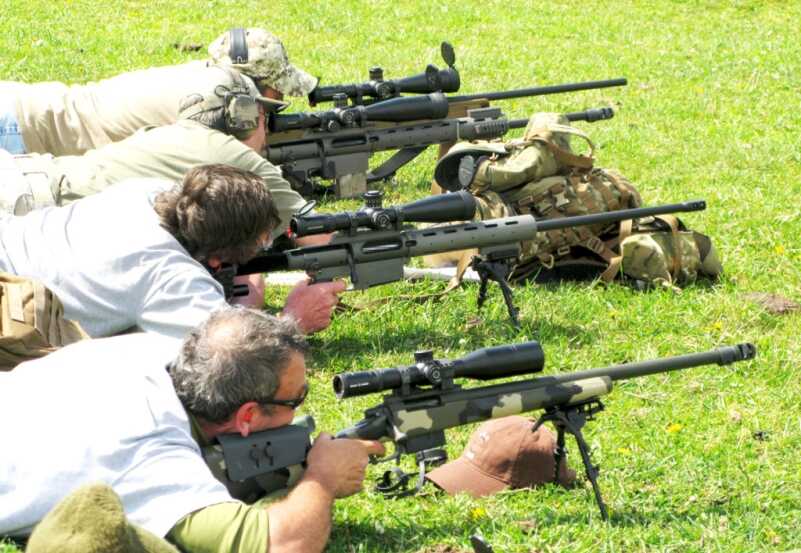
Detachable magazine systems are a must-have feature for a chassis or stock that’s going to be used for precision rifle competition. This author recommends sticking with AICS pattern magazines since it is the most common and proven type of magazine in the circuit. All four rifles in this picture are using AICS pattern magazines so if you forget one or have one go bad, someone will be able to spot you in the short term.
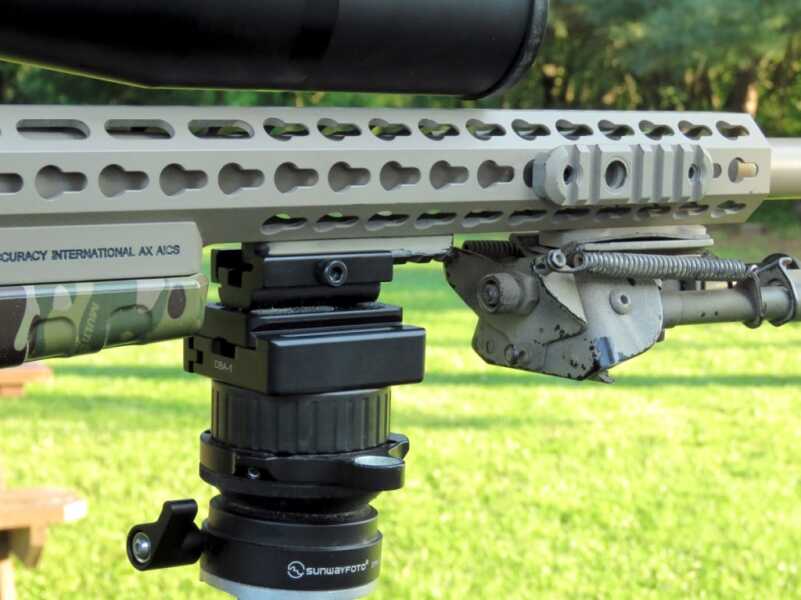
Modularity is where chassis systems separate themselves from traditional composite stocks because with the aid of a wrench the location of rails, flush cups, and bipod mounts can be moved around at will. Some chassis are even M-Lok and Keymod compatible so some of the same accessories that you use on your AR-15 can be used on your precision rifle.
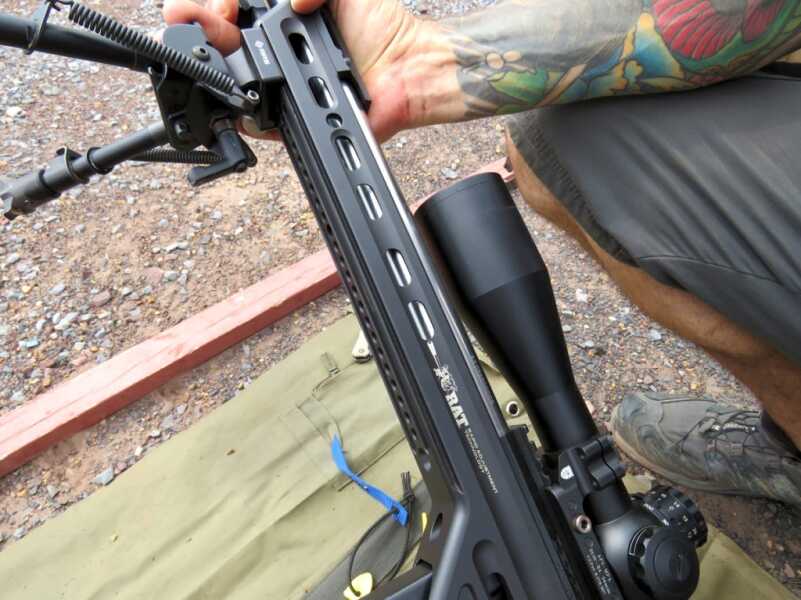
MasterPiece Arms takes chassis modularity to the next level with machine work that borders on the artistic. The grooves machined into the sides of the chassis are Arca Swiss compatible for direct tripod mounting and the holes along the bottom are for setting up their barricade stop system, which is great for PRS skills stages.
As good as chassis systems are they do have a couple of drawbacks, chief among them being their weight. Most systems weigh on average about five to six pounds. Add in a barreled action, scope, and bipod and the total weight can easily balloon north of 16 pounds. However, sometimes that weight can be an advantage, and many competitions don’t really require a lot of long-distance movement so the benefits could be worth the extra heft.
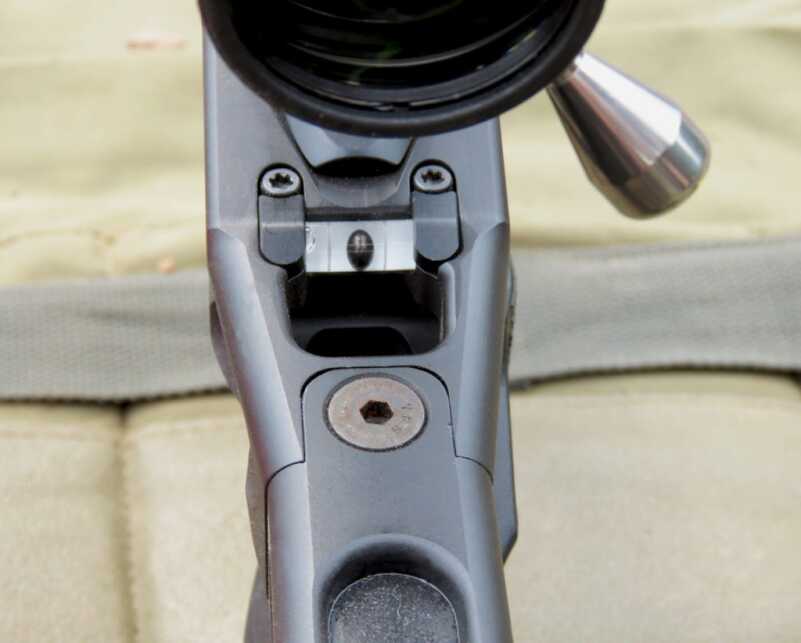
A pretty trick feature of the MasterPiece Arms chassis is a built-in leveling system to make sure that you’re reticle won’t be canted for those long-range shots on small targets.
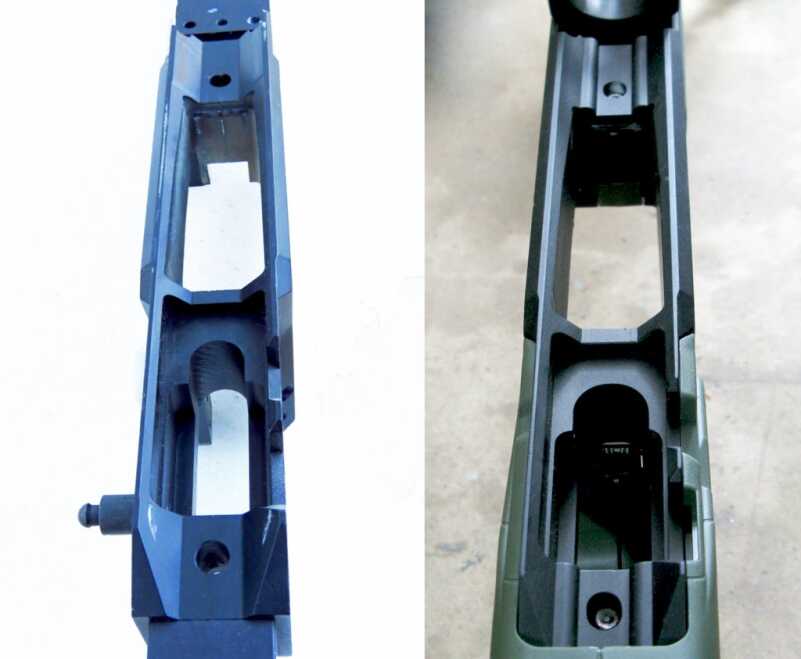
The bedding interface is where chassis systems are either loved or hated. Their loved because they often negate the need for an expensive epoxy bedding jobs and hated because sometimes they have to be skim bedded anyway. Traditional V-block bedding blocks like the one on the left is a common configuration in many chassis systems but some manufacturers are improving them, like the Accuracy International chassis on the right. The ridges on either side of the action screws provide increased support at the tang and front of the action to reduce the possibility of the action being stressed once torque is applied.
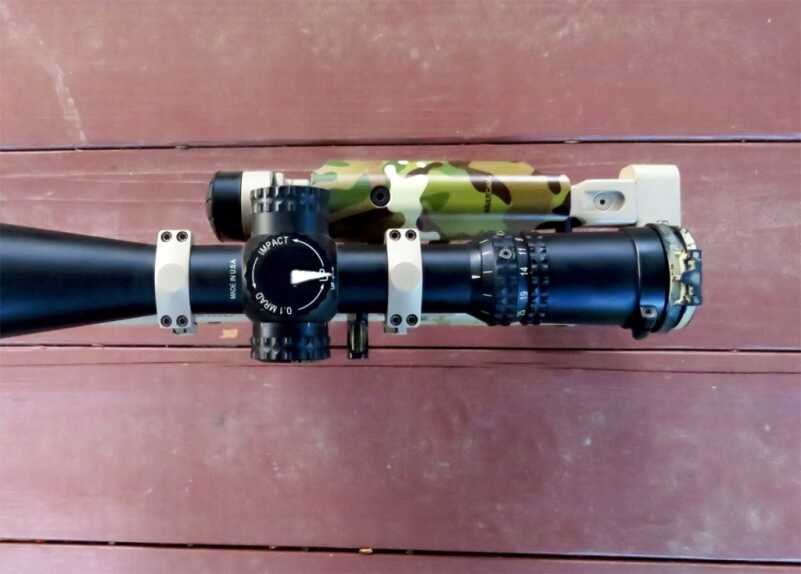
Left folding buttstocks are a dime a dozen on many chassis but a right hand folding stock on a chassis keeps the overall width to a minimum since it will nest with the bolt handle. A relatively small detail but a nice one nonetheless when you’re looking to make the package as small as possible for storage or transport.
The other drawback to a chassis is that sometimes the bedding interface doesn’t play well with some actions and induces stress, which can hurt consistent accuracy. An easy test to see if your chassis might be causing stress in the action is to torque both action screws down and then loosen the front action screw while holding the barrel at the end of the barrel channel. If the bedding interface is stress-free, you won’t be able to notice any movement of the barrel in the channel once the screw is loosened. If there is stress in the action you will feel the barrel move upwards, but it’s not the end of the world. You can sometimes play with the torque settings and still get good accuracy. However, if nothing seems to work, it could be that the chassis needs to be skim bedded to the action at the recoil lug pocket and rear tang.

This Manners Composite Stocks T6 is the latest evolution of a traditional composite stock for PRS-type competition. It’s lighter, with better adjustments, some level of modularity, and, yes, it’s magazine fed. According to the owner, this stock costs about $1,100+ with a six month lead time, but he said the cost was well worth it considering the quality and comfort. So in a way, it’s the Cadillac of composite stocks, I suppose.
Traditional-Style Composite Stocks
Although chassis systems have become hugely popular, traditional-style stocks like the ones from McMillan and Manners Composite still have a place on the firing line. The materials and methods used to construct these stocks have been around for decades, which is really what I mean when I say traditional. So, what’s going to push someone towards a traditional-style stock versus a modern chassis system? One reason has got to be the custom nature of these stocks since they are made by hand-laying fiberglass, kevlar, carbon fiber, or a combination of materials into specific molds. This allows nearly every facet of the stock to be determined by the customer, from the material to the color, to finally what features and adjustments it will have. This method of construction also means when finished that these stocks are often one-piece, very solid, and impervious to the elements, all of which are important in a precision rifle stock.
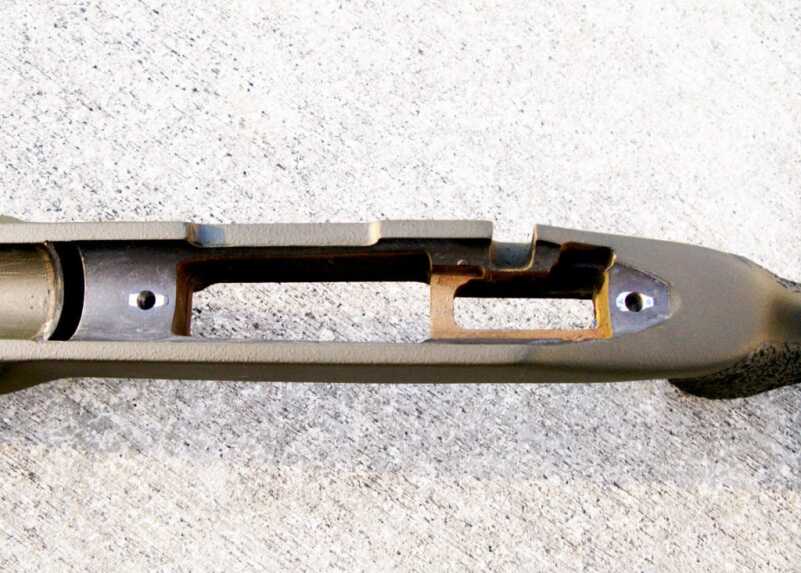
While the Manners T6 pictured earlier featured their mini-chassis, most traditional composite stocks need to be epoxy bedded in something like Marine Tex or Devcon Steel Puddy. When done properly it will look like the above bedding job that matches the action perfectly to give it a nice, stress-free resting place for consistent accuracy.
Traditional-style stocks will also have a different feel compared to chassis systems with softer lines and a more comfortable grip that’s an easy transition for some shooters. Traditional-style stocks are also lighter in comparison to many chassis systems, which can be an important factor for a shooter if they plan to carry the rifle long distances. The use of carbon fiber in making traditional-style stocks is becoming more commonplace, allowing manufacturers to put out a stock that weighs less than two pounds depending on options.
Although traditional-style stocks are made by hand compared to the CNC machined chassis systems, they are available with some of the same features. The only difference is that on a traditional-style stock you start out with a base model and then everything else is an add-on option. In a lot of ways, it’s not so different from ordering a car. Sling swivels, for example, can include quick detach sling mounts on a traditional stock, just as you can on a chassis, but you have to tell the manufacturer how many and where you want them. Also, unlike many chassis systems, once these mounts are installed, they can’t be moved, so if you want another one at another location you have you’ll have to drill some more holes.
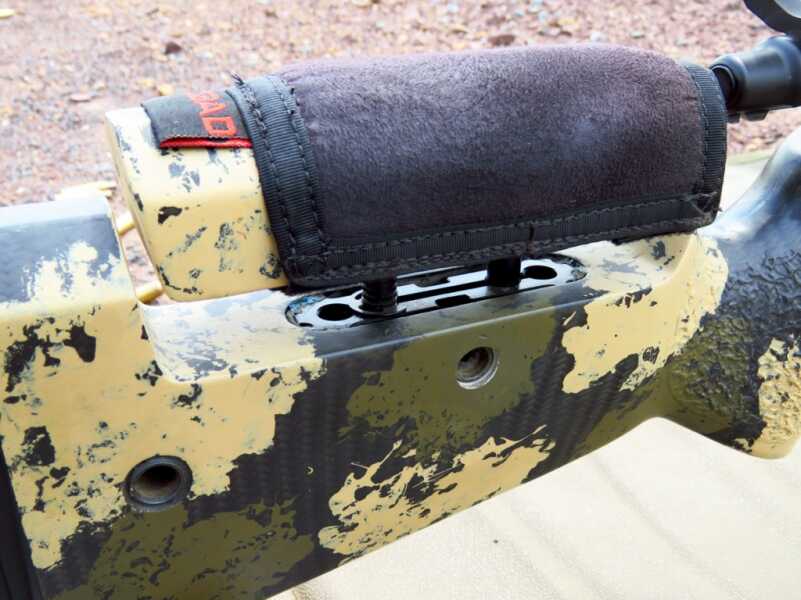
The KMW Loggerhead cheek piece is an option on Manners stocks and is widely considered a standard by which other adjustable cheek pieces are judged by. It’s very secure and will not loosen up under recoil like older designs such as the saddle cheek piece that was held in place by two small set screws.
Cheekpiece and length of pull adjustments are also present on a traditional stock but executed a little differently compared to a chassis. The length of pull adjustments on a traditional-style stock is usually done via a spacer system, which is effective and robust but a little slow and clumsy. For the purposes of precision rifle matches, you definitely want an adjustable cheek piece and they come in many forms.
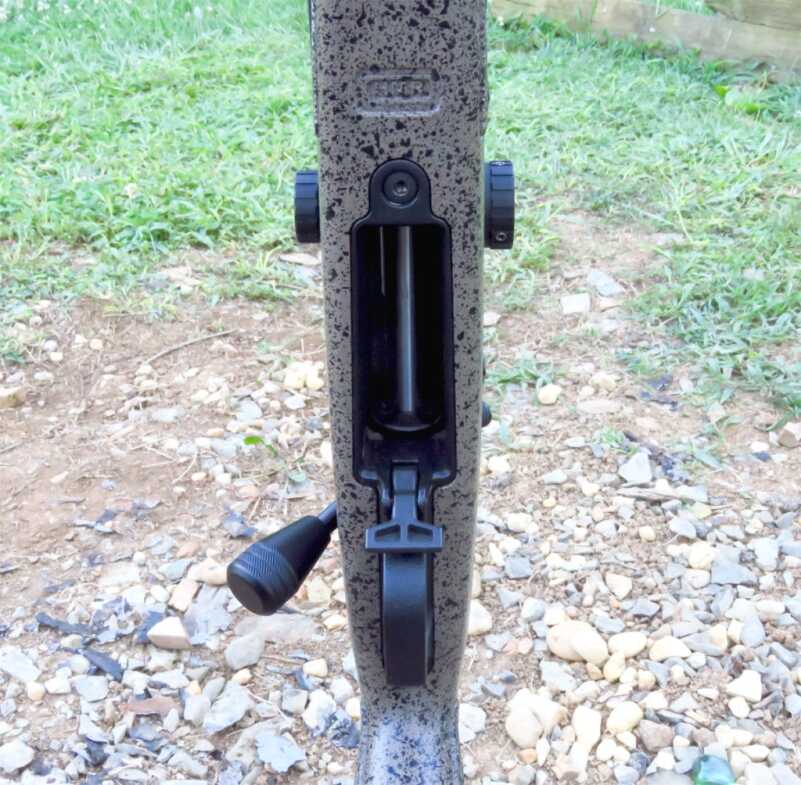
Unlike chassis, in order to run a detachable magazine system in a traditional composite stock, it requires a separate trigger guard to be installed. Often the stock needs to be inlet for the specific trigger guard and the bedding pillars set to the correct depth so that it will work reliably. The Badger Ordnance M5 pattern is the most common inlet for these types of systems but a few manufacturers have their own proprietary profile that can complicate things.
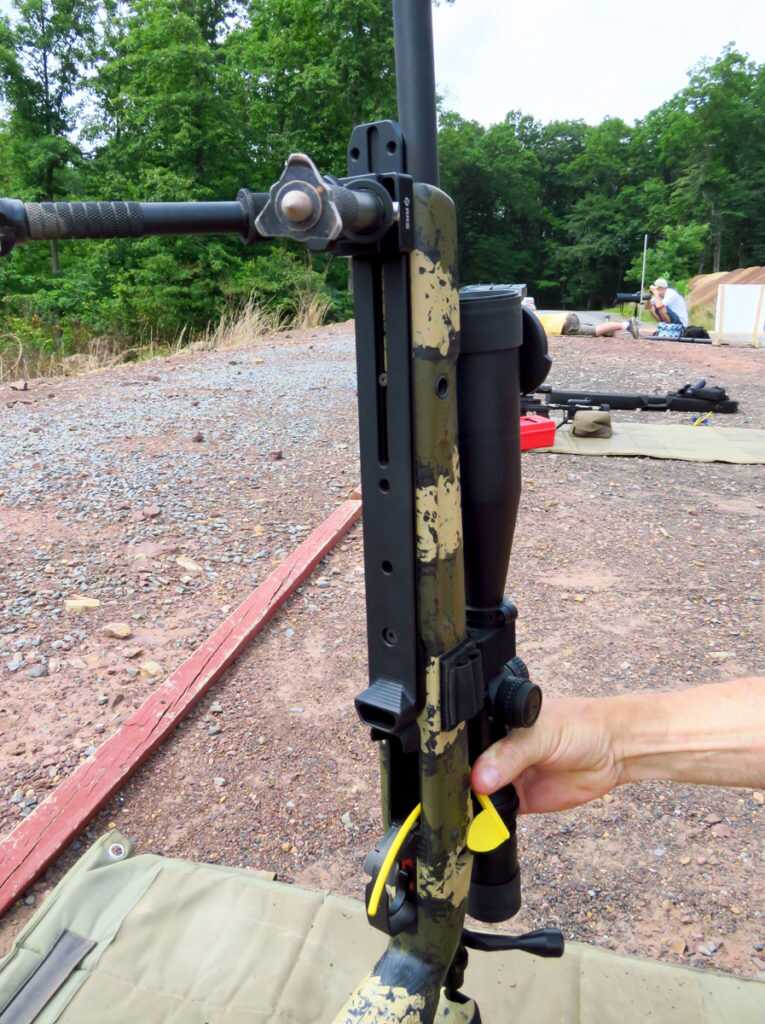
Traditional composite stocks can sometimes be accused of being less modular than their chassis brethren but a few companies are looking to change that outlook. Area419, for example, makes an Arca Swiss compatible accessory rail with a built-in barricade stop that bolts to the bottom of the stock without modification.
Truth be told, the older systems from McMillan—like the saddle cheek rest and thumb screw cheek rests— were pretty horrible, they came loose all the time and could strip set screws. In fact, when I had a saddle cheek piece on my McMillan A-5 I had to put spacers underneath it to keep it from collapsing all the way while I was shooting. The newer clamp bar and KMW Loggerhead cheek pieces are far superior for a traditional-style stock since they lock down tight and don’t move under recoil. Unlike chassis systems, traditional style stocks do not come with a DBM system out of the box. It’s usually a separate item that needs to be purchased and installed with specific bedding pillars to ensure it will function reliably. This is just another cost that needs to be added to the budget when buying a competition-ready stock.
So, what are some of the downsides to a traditional-style stock? Well, first, the cost is pretty steep since you start out with a baseline stock and all of those options needed to make it competition-ready really eat into your wallet. $15 per sling mount here, $200 for a detachable magazine system there, and it adds up quick. Before long. you have a stock that exceeds the cost of a high-end chassis, but hey, at least it’s lighter. The lead times can also be pretty extraordinary, too, since each stock is made-to-order and done by hand. Where you can sometimes get a chassis in a couple days, a traditional-style stock can take up to half a year to arrive, and even then it could require additional work to get it ready for prime time.

It’s not a new concept for a manufacturer to drop one of their barreled actions into a composite stock and send it out the door as a factory precision rifle. However, as manufacturing has improved and new materials get used, rifle makers can provide a composite stock like the one on this Bergara HMR that has all the features a precision rifle competitor needs at a fraction of the cost.
Conclusion
If you’re in the market for a new stock, my recommendation is to try to get behind some different types and see how they feel and what features they have. We’ll call it a test drive. Usually, if you ask nicely, some guys will let you send a few rounds downrange as well. There’s nothing worse then ordering a new stock, waiting months for it to arrive, and then come to the realization that you hate how it feels. I know, I’ve done it. There’s a wide world of options out there, but my advice is to stick with well-established brands with a history on the competition circuit.
If you value lighter weight with a few extra features, then perhaps the traditional-style stock is for you. Weight not being a concern, but you need adjustability, modularity, and you need it fast, then a chassis is probably right up your alley. Just remember that a good stock should fit you like an old pair of dusty boots. Your shooting will thank you later.

I happen to own the Bergara HMR. It’s a great piece of kit. LOP and cheek adjustments on top of having great accuracy. I like it better than the the chassis system on my Savage BA Stealth 338.